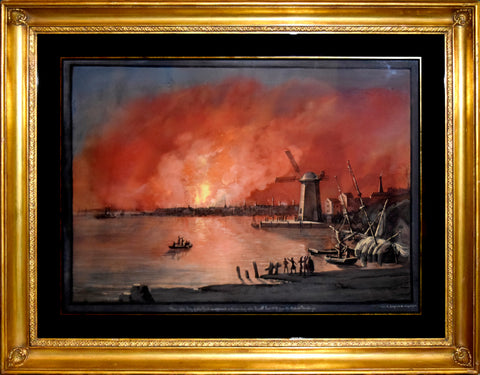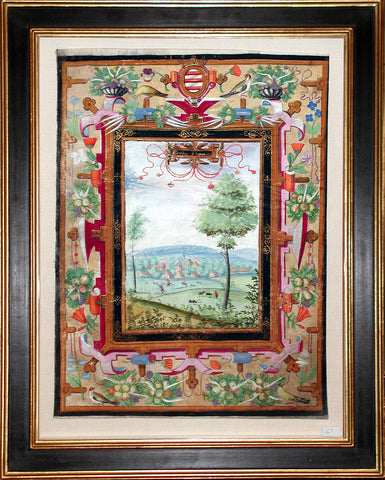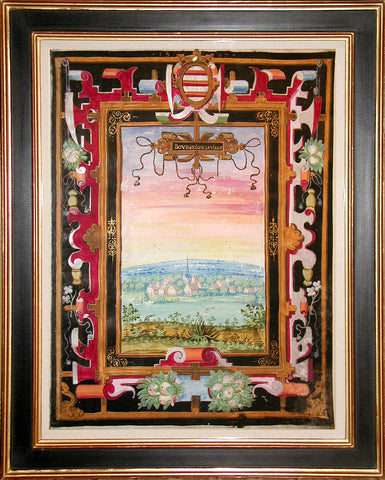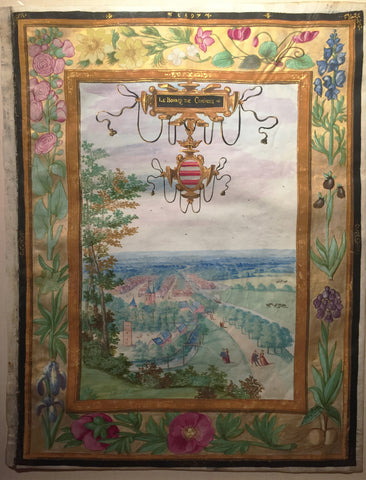
Nicolino Calyo (1799-1884), View of New York City as It Appeared on the Eve of the Fire, 1835
View of New York City as It Appeared on the Eve of the Fire, 1835
Gouache on paper
Sight size: 20 x 27 1/2 inches
Frame size: 28 x 36 inches
Signed, dated, and inscribed at (I.e.): 'View of the City of New York as it appeared on the evening of the fire 16th Dec 1835 from the mill at Brooklyn'; (at l.r.): 'From N. Calyo. 402.BroadwayN.York'
References: Patterson, Margaret Sloane: 'Nicolino Calyo and His Paintings of the Great Fire of New York, December 16th and 17th, 1835," The American Art Journal, XIV (Spring 1982), pp. 4-22.
This striking original watercolor of New York is the work of Nicolino Calyo, a talented immigrant artist who captured a unique view of the city during one of the most epochal events of the nineteenth century. In his View of New York as It Appeared on the Eve of the Fire, 1835, the artist rendered the blaze in Manhattan from the shoreline in Brooklyn. The sky is drenched a dramatic red as the fire licks the night sky. A handful of spectators crowd at the waters edge and beneath the windmill at the right, watching the devastation. Although volunteer fire companies promptly arrived at the scene of the blaze on the night of December16th, 1835, New York was gripped by the coldest weather recorded in decades. The firemen were virtually powerless as their water supplies and horses froze in the sub-zero clime. The fire, which began at a dry goods establishment of Comstock and Andrews at 25 Mercer (now Beaver)Street, raged out of control for fifteen hours. In its wake, nearly the whole of the First Ward of Manhattan, the heart of New York's commercial, financial, and civic district, was consumed.
Calyo's career reflects a restless spirit of enterprise and adventure. Descended from the line of the Viscontes di Calyo of Calabria, the artist was the son of a Neapolitan army officer. Calyo received his formal training in art at the Naples Academy, and his career took shape amidst the political turbulence of early-19th century Italy, Spain, and France. He fled Naples after choosing the losing side of struggles of 1820-21, and by 1829 was part of an Italian exile community in Malta. This was the keynote of a peripatetic life that saw the artist travel through Europe, to America, within America, perhaps to Europe again, and back to America. Calyo's forte was close observation of people and places, meticulously rendered in the precise topographical tradition of his fellow countrymen, Canaletto and Francesco Guardi. In search of artistic opportunity Calyo left Malta and, by 1834, was on the opposite side of the Atlantic Ocean in Baltimore, Maryland. He rapidly drew attention for his artistically rendered visual images of familiar locales, executed with a degree of polish and skill that was second nature for artists trained in the European academic tradition. Calyo arrived and settled in New York in 1835, inspired by the sights of the flourishing metropolis.
We Also Recommend





